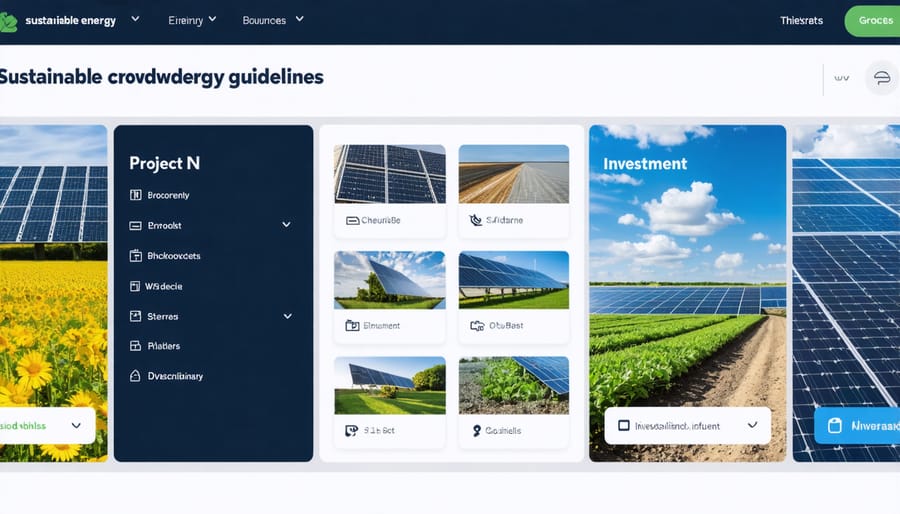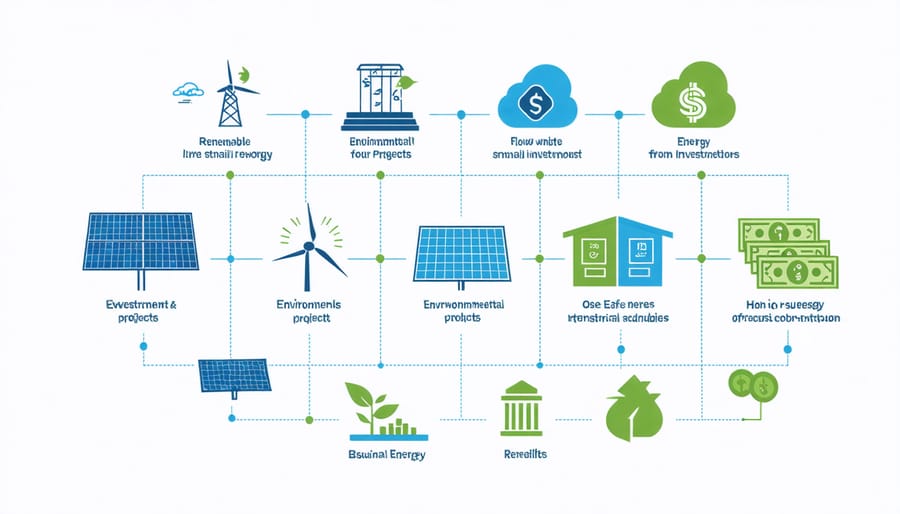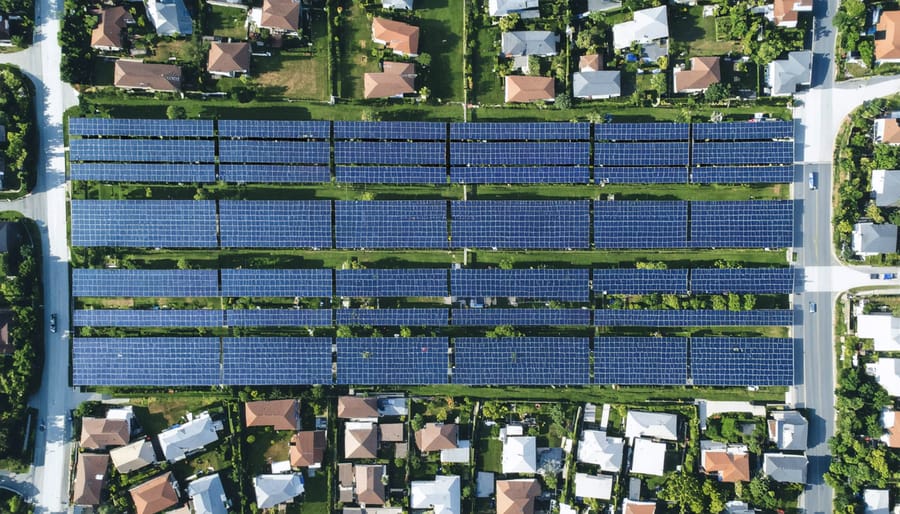The renewable energy investment landscape is undergoing a radical transformation, with X-energy emerging as a groundbreaking force in Australia’s sustainable future. This innovative investment model democratizes access to clean energy projects, allowing everyday Australians to participate in funding next-generation nuclear technology, advanced solar installations, and breakthrough energy storage solutions. Through dedicated crowdfunding platforms and specialized investment vehicles, forward-thinking investors are now channeling their capital into projects that promise both environmental impact and compelling financial returns.
Unlike traditional energy investments, X-energy opportunities focus on scalable, future-proof technologies that address Australia’s unique energy challenges. These investments typically range from $500 to $50,000, making them accessible to both retail investors and sophisticated market participants. Leading platforms report average returns of 8-15% annually, while contributing to Australia’s commitment to reducing carbon emissions by 43% by 2030.
Industry pioneers like Brighte Capital and Clean Energy Finance Corporation have already demonstrated the viability of this investment model, successfully funding over $1 billion in renewable energy projects across the country. For investors seeking to align their portfolios with environmental values while capturing the upside of the clean energy revolution, X-energy investments represent a timely and strategic opportunity to participate in Australia’s energy transformation.
The Rise of X-Energy Investment Platforms
How X-Energy Platforms Work
X-Energy platforms operate through a sophisticated yet user-friendly system that combines innovative financing technologies with sustainable energy projects. These platforms typically follow a three-tier structure: project validation, investor matching, and return distribution.
First, renewable energy projects undergo rigorous assessment by industry experts who evaluate their viability, environmental impact, and potential returns. Once approved, projects are listed on the platform with detailed information about their scope, funding requirements, and expected outcomes.
Investors can then browse through various opportunities and choose projects that align with their values and investment goals. The minimum investment amounts are often kept accessible, starting from as low as $100, making sustainable energy investment available to everyday Australians.
The platforms use secure payment systems and smart contracts to manage transactions, ensuring transparency and accountability. As projects generate revenue through energy production and government incentives, returns are automatically distributed to investors based on their contribution percentage. Real-time monitoring systems allow investors to track their investment performance and environmental impact through user-friendly dashboards.

Key Players in Australia’s Energy Crowdfunding Space
Australia’s energy crowdfunding landscape features several pioneering platforms that are reshaping how everyday Australians can invest in renewable energy projects. Brighte leads the pack with its innovative green loan platform, helping homeowners fund solar installations and energy efficiency upgrades through community-backed investments.
Clean Energy Crowd, another significant player, specializes in large-scale solar and wind projects, offering investment opportunities starting from as little as $50. Their unique approach combines traditional crowdfunding with blockchain technology to ensure transparent tracking of investments and returns.
The Renewable Energy Hub stands out for its focus on regional and rural energy projects, connecting farmers and agricultural businesses with urban investors passionate about sustainable development. Their success in funding bioenergy projects has made them a go-to platform for agricultural waste-to-energy initiatives.
DomaCom’s fractional property investment platform has recently expanded into renewable energy, allowing investors to own shares in solar farms and wind turbines. Their innovative approach enables investors to trade their shares on a secondary market, providing much-needed liquidity in the renewable energy investment space.
These platforms collectively demonstrate the growing maturity of Australia’s energy crowdfunding ecosystem, making sustainable energy investment accessible to all.

Benefits for Small Investors
Financial Returns and Tax Incentives
Investing in sustainable energy projects through X-energy platforms can deliver both environmental and financial benefits. As part of Australia’s ongoing green finance revolution, investors can expect potential returns ranging from 5-15% annually, depending on the specific project and investment structure.
The Australian government offers several tax incentives to encourage investment in renewable energy projects. These include the Early Stage Innovation Company (ESIC) tax offset, which provides eligible investors with a 20% tax offset on investments up to $200,000 per year. Additionally, investors may benefit from capital gains tax exemptions when holding qualifying investments for more than 12 months.
Many X-energy projects also qualify for various state-level incentives and grants, which can enhance overall returns. The Clean Energy Finance Corporation (CEFC) frequently co-invests in promising projects, reducing risk for individual investors while boosting potential returns.
It’s worth noting that some platforms offer innovative investment structures, such as revenue-sharing agreements or convertible notes, which can provide regular income streams while maintaining the potential for capital appreciation. Many successful investors have reported achieving both their financial goals and positive environmental impact through strategic X-energy investments, particularly in community-scale projects that benefit from local support and engagement.
Environmental Impact and Social Returns
X-energy investments generate profound environmental and social benefits that extend far beyond financial returns. These projects actively reduce greenhouse gas emissions, with the average bioenergy facility preventing thousands of tonnes of CO2 from entering the atmosphere annually. In regional Australia, these initiatives create sustainable job opportunities, particularly in areas transitioning from traditional energy sectors.
Community-owned energy projects have demonstrated remarkable social returns, fostering local resilience and energy independence. For instance, the Hepburn Wind project in Victoria not only powers thousands of homes with clean energy but also reinvests profits into local community initiatives through its benefit-sharing program.
The ripple effects of x-energy investments reach deep into agricultural communities, where farmers can diversify their income by supplying biomass feedstock. This creates a circular economy model, turning agricultural waste into valuable energy resources while supporting regional development.
These projects also contribute to Australia’s biodiversity goals through sustainable land management practices. Many bioenergy facilities incorporate native vegetation corridors and wildlife protection measures into their operations, demonstrating how renewable energy and environmental conservation can work hand in hand.
Educational benefits are equally significant, with many x-energy projects partnering with local schools and universities to provide hands-on learning opportunities in renewable energy technologies. This knowledge transfer helps build the skilled workforce needed for Australia’s sustainable energy future.
Success Stories and Case Studies
Community Solar Projects
Australia’s landscape is dotted with inspiring examples of community-powered energy projects that showcase the power of collective investment. The Pingala Community Solar Project in Sydney stands as a shining example, where 122 local investors pooled resources to install a 29.9kW solar array on the Young Henrys brewery, generating both clean energy and steady returns for participants.
In regional Victoria, the Hepburn Wind Farm demonstrates how community funding can scale up, with over 2,000 members contributing to Australia’s first community-owned wind farm. The project now powers more than 2,000 homes and returns profits to local shareholders.
The Denmark Community Windfarm in Western Australia tells another success story, where residents raised $6.1 million to install two 800kW turbines. The installation now provides enough clean energy to power 50% of their town’s residential needs.
These projects showcase how everyday Australians are taking control of their energy future. Beyond financial returns, these installations strengthen community bonds, create local jobs, and serve as educational platforms for future generations interested in sustainable energy solutions.

Bioenergy Initiatives
The Australian bioenergy sector has witnessed remarkable success through crowdfunding initiatives, demonstrating the power of community-backed renewable energy projects. A standout example is the Cowra Biomass Project, which raised $2.5 million through small-scale investors to convert agricultural waste into clean energy, powering over 1,000 local homes.
In Tasmania, the Huon Valley Bioenergy Hub showcases how crowdfunding can transform regional communities. Local residents pooled resources through a digital investment platform, contributing to a $3.8 million facility that processes timber waste into biofuel, creating sustainable jobs while reducing carbon emissions.
The Northern Rivers Bioenergy Coalition presents another inspiring case study, where 350 community members invested in a network of small-scale biogas plants. This initiative not only provides clean energy to the region but also helps local farmers manage organic waste effectively.
These success stories highlight the growing trend of everyday Australians becoming clean energy investors. The average investment in these projects ranges from $500 to $5,000, making sustainable energy investment accessible to many. Importantly, these initiatives often deliver returns between 5-8% annually while contributing to Australia’s renewable energy targets and supporting local communities.
Getting Started as an X-Energy Investor
Platform Selection and Due Diligence
Selecting the right platform for x-energy investments requires careful consideration and thorough due diligence. Start by examining platforms with a proven track record in renewable energy projects, particularly those with successful neighborhood transformation initiatives in Australia.
Key factors to evaluate include the platform’s licensing and regulatory compliance, minimum investment requirements, and fee structures. Look for platforms registered with ASIC (Australian Securities and Investments Commission) and those that provide comprehensive project documentation and risk assessments.
When evaluating specific projects, focus on:
– Project team credentials and experience
– Clear business models and revenue projections
– Technology validation and implementation timeline
– Environmental impact assessments
– Community engagement plans
– Exit strategies and expected returns
Top-tier platforms typically offer detailed project prospectuses, regular updates, and transparent communication channels. They should also provide clear information about how funds are secured and managed throughout the project lifecycle.
Consider starting with smaller investments across multiple projects to diversify risk. Many successful investors begin with $1,000 to $5,000 per project while learning the ropes. Platforms that offer educational resources and investor support are particularly valuable for newcomers to the sector.
Don’t hesitate to reach out to platform representatives with questions. Reliable platforms welcome due diligence and maintain open communication with potential investors. They should be able to clearly explain their project selection criteria, risk management strategies, and investor protection measures.
Remember, thorough research and careful platform selection are crucial first steps in building a successful x-energy investment portfolio.
Risk Management and Investment Strategies
Building a balanced sustainable energy investment portfolio requires a strategic approach that combines careful risk assessment with diversification. Start by allocating your investments across different renewable energy sectors, including solar, wind, and bioenergy projects. This spread helps protect your portfolio against sector-specific downturns while maximizing potential returns.
Consider adopting a tiered investment strategy, where you balance high-potential early-stage projects with more established renewable energy companies. A common approach is the 40-40-20 rule: 40% in established renewable energy companies, 40% in growing mid-sized projects, and 20% in innovative start-ups with promising technologies.
Due diligence is crucial before committing funds. Research the track record of project developers, examine the technology’s commercial viability, and assess the regulatory environment in different states. For Australian investors, understanding local renewable energy targets and incentive schemes can provide valuable insights into potential growth areas.
Risk mitigation strategies should include:
– Regular portfolio reviews and rebalancing
– Investment in projects with power purchase agreements
– Focus on companies with strong governance structures
– Geographic diversification across different states and territories
– Consideration of environmental, social, and governance (ESG) factors
Remember to maintain liquidity by including a mix of both short-term and long-term investments. Consider crowdfunding platforms that offer secondary market trading options, allowing you to exit investments if needed. Start with smaller investments to test different approaches and gradually scale up as you gain confidence in the market.
Keep abreast of industry trends and technological developments that could impact your investments, particularly in the rapidly evolving renewable energy sector.
The future of x-energy investment in Australia stands at a pivotal moment, with unprecedented opportunities for both individual and institutional investors. As our nation continues its transition towards renewable energy sources, the x-energy sector is poised for significant growth over the next decade. The convergence of technological advancement, supportive government policies, and increasing environmental awareness has created a perfect storm for sustainable investment success.
Industry experts project that x-energy investments could generate returns between 8-15% annually while contributing to Australia’s clean energy targets. The sector’s resilience during economic uncertainties has proven its worth as a stable long-term investment option. Moreover, the growing number of successful projects across the country demonstrates the sector’s maturity and reliability.
For prospective investors, the timing couldn’t be better. With new crowdfunding platforms making investment more accessible than ever, Australians from all walks of life can participate in the clean energy revolution. The democratization of energy investment through these platforms has opened doors for smaller investors to make meaningful contributions while potentially earning attractive returns.
Looking ahead, the x-energy sector is expected to play a crucial role in Australia’s energy mix, with projections suggesting it could supply up to 30% of the nation’s energy needs by 2040. This growth trajectory, combined with increasing corporate commitments to renewable energy, presents a compelling case for both seasoned and new investors to consider x-energy as part of their investment portfolio.

